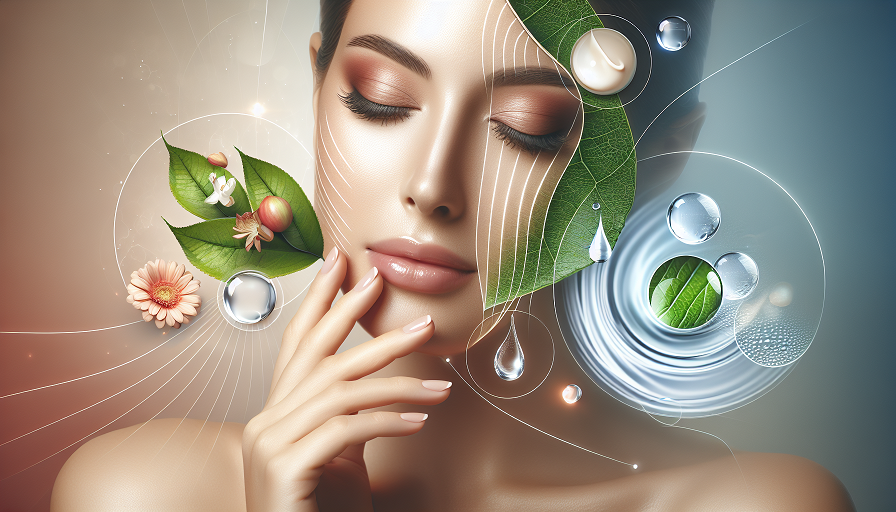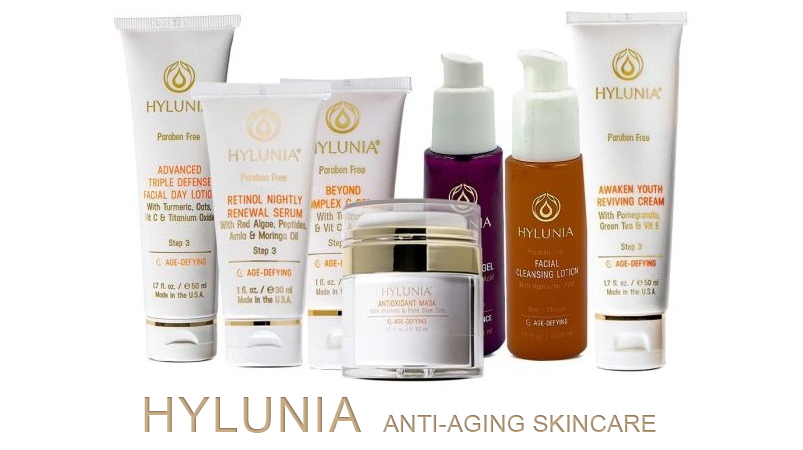
When it comes to premature aging, most of us know to blame UV rays. But did you know that the blue light from your screens—phones, laptops, tablets—can also harm your skin? Blue light exposure can accelerate skin aging, leading to wrinkles, pigmentation, and a loss of firmness.
Contents
- What Is Blue Light, and How Does It Affect the Skin?
- How Much Blue Light Exposure Are We Actually Getting?
- Tips to Protect Your Skin from Blue Light
- Creating a Blue Light Defense Routine
- Blue Light-Blocking Products: Are They Worth It?
- Limit Your Screen Time for a Skin Break
- The Future of Blue Light and Skincare
What Is Blue Light, and How Does It Affect the Skin?
Blue light, also known as high-energy visible (HEV) light, is part of the visible light spectrum. While it’s emitted by the sun, digital screens have become a major source of blue light exposure. Research shows that blue light can penetrate the skin more deeply than UV rays, reaching the dermis where collagen and elastin reside.
Blue Light and Oxidative Stress
Blue light exposure leads to oxidative stress, meaning it produces free radicals that damage cells. This oxidative stress breaks down collagen and elastin, the proteins that keep skin firm and youthful. The result? Fine lines, wrinkles, and sagging.
Hyperpigmentation and Blue Light
Studies suggest that blue light may trigger melanin production, especially in people with darker skin tones. This can lead to hyperpigmentation, making dark spots and uneven skin tone more pronounced. So, if you’re noticing more spots or uneven patches, your screen time might be to blame.
How Much Blue Light Exposure Are We Actually Getting?
It might be surprising, but the average person spends about 7 to 10 hours a day in front of screens. While blue light exposure from the sun is stronger, digital exposure is more prolonged. Over time, this adds up and can have a real impact on your skin’s health and appearance.
Day-to-Day Digital Exposure
From morning emails to late-night scrolling, we’re surrounded by screens. This means our skin is exposed to blue light almost constantly. While it doesn’t burn like UV rays, the cumulative effect can lead to long-term skin damage.
The Rise of Indoor Aging
With so much time spent indoors, especially if you work from home, our skin is facing a new type of aging that’s unrelated to sun exposure. Blue light exposure has even led dermatologists to coin the term “digital aging.”
Tips to Protect Your Skin from Blue Light
Now that we know the risks, let’s look at ways to protect your skin from blue light. The good news is there are simple, effective strategies to minimize its impact on your skin.
Use Skincare with Antioxidants
Antioxidants like vitamin C, vitamin E, and niacinamide help neutralize the free radicals caused by blue light exposure. Applying an antioxidant serum in the morning creates a protective shield that fights oxidative stress all day.
- Vitamin C: A potent antioxidant that brightens skin and fights free radicals.
- Niacinamide: Known for reducing pigmentation and calming the skin, making it an ideal addition to combat blue light effects.
Consider Blue Light-Blocking Skincare
Some skincare brands are now formulating products specifically to block blue light. These creams and serums create a physical barrier that prevents blue light from penetrating deeply. Look for ingredients like iron oxide, which has been shown to reflect visible light.
Lower Your Screen’s Brightness
Reducing your screen’s brightness can help minimize blue light exposure. Most devices have a “night mode” or “blue light filter” setting that can significantly cut down on blue light. Activating this setting not only reduces eye strain but also lessens the blue light reaching your skin.
Creating a Blue Light Defense Routine
Protecting your skin from blue light doesn’t have to be complicated. Here’s a simple routine to help you defend your skin all day long.
Step 1: Morning Antioxidant Application
After cleansing, apply a vitamin C serum. This antioxidant-rich layer will fight free radicals generated by blue light exposure. Follow up with a moisturizer containing niacinamide for added protection and hydration.
Step 2: Wear Sunscreen with Iron Oxide
Iron oxide isn’t just for sun protection—it can also shield against blue light. Look for a sunscreen with broad-spectrum coverage that includes iron oxide to get double-duty protection. Apply it generously and reapply if you’re spending a lot of time in front of screens.
Step 3: Evening Skincare Recovery
At night, focus on repairing your skin. Use a hydrating cleanser to remove any residue, followed by a retinol or peptide serum to support collagen production. This will help counteract some of the damage caused by blue light.
Blue Light-Blocking Products: Are They Worth It?
There’s a growing market for blue light-blocking products, from screen protectors to skincare. But are they necessary? Here’s a look at some popular options and whether they’re worth trying.
Blue Light Screen Filters
Screen filters are a cost-effective way to cut down on blue light. These filters are easy to apply to your phone or computer screen and can reduce blue light exposure by up to 90%. This is an easy first step if you’re concerned about blue light’s effects on your skin.
Blue Light-Specific Skincare
While traditional sunscreens focus on UV protection, some new products aim to block both UV and blue light. Skincare with iron oxides, antioxidants, and other protective ingredients can help defend against blue light. If you’re frequently exposed to screens, these products can be a useful addition to your skincare routine.
Limit Your Screen Time for a Skin Break
One of the simplest ways to protect your skin from blue light is to take breaks from your screens. Not only does this help your skin, but it’s also good for your overall well-being. Here are a few tips to reduce your screen exposure.
Follow the 20-20-20 Rule
Every 20 minutes, look at something 20 feet away for at least 20 seconds. This reduces eye strain and gives your skin a quick break from blue light. It’s a small habit that can make a difference if you’re in front of a screen all day.
Establish “No Screen” Zones
Consider setting screen-free times, like during meals or right before bed. This can help reduce the cumulative exposure to blue light and gives your skin a break from continuous blue light assault.
The Future of Blue Light and Skincare
Research on blue light’s effect on skin is still evolving, and we’re learning more about its impact every year. As awareness grows, more skincare products and lifestyle adjustments are likely to focus on blue light protection. Until then, a few simple changes can make a big difference in reducing the impact of blue light on your skin.
From antioxidants to screen filters, small actions go a long way in protecting your skin from premature aging caused by blue light. With these tips, you can keep your skin healthy and glowing—even in a screen-heavy world.

